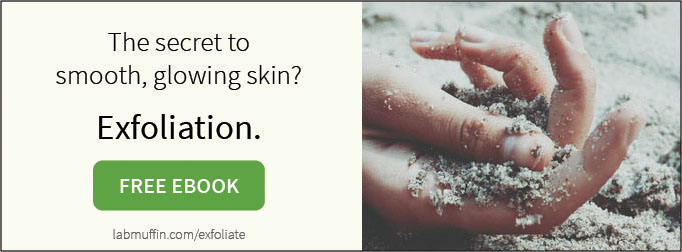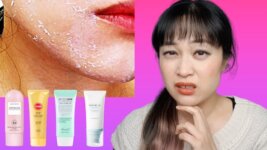Reddit is a fantastic source for budget-friendly skincare tips that could potentially make a huge difference to your skin without breaking the bank, but some of the tips are very user-dependent. I rounded up the top tips and went through the science behind them, then put them into a tier list for my latest video – check it out here.
The tips include:
- Slugging – applying Vaseline or petroleum jelly in a thin layer over the rest of your skincare
- Sleeping on your back
- Changing your pillowcase more often
- Wear sunscreen (of course)
- Heal your gut (don’t Google this unless you want to lose your faith in humanity)







Hey,
could you maybe do a video/post about the boots star rating system please? Most people think (including myself until recently) that the stars simply show the percentage of UVA that’s blocked compared to UVB. So using an SPF 50 sunscreen with a boots star rating of five they calculate 50*0.9 and end up with a UVA-PF of 45. But tbh a UVA protection that is almost 1:1 to SPF has always seemed pretty unrealistic to me. Recently I’ve come across a different way of calculating the UVA-PF with the boots star rating where you calculate the power instead. So 50^0.9=34. A UVA protection like that looks a lot more realistic. I’m not sure if I can include links here but I’m going to copy the equation that made the person think that this could be the true relation between UVA and UVB in the boots star rating system.
* Boots = Auva / Auvb
with A = -log(T)
with T= transmission from 0-1
* Absorbance % = 100 – 100/SPF
Transmittance = 100 – abs = 100/SPF
Transmittance (fraction) = 1/SPF
* Boots = -log(Tuva) / -log(Tuvb)
Boots * log(Tuvb) = log(Tuva)
Tuvb^Boots = Tuva
(1/SPF)^boots = 1/UVAPF
UVAPF = 1 /(1/SPF)^boots = SPF^boots
Would love to hear your thoughts on this cause I feel like there are many misunderstandings regarding the boots star system.
Kind regards,
Lena
My understanding is that the Boots Star Rating is simply the ratio of the area under the curve for UVA vs UVB measured in vitro using the Boots method (which is slightly different from the broad spectrum method), but UVAPF involves taking the UVA spectrum and weighting with the PPD action spectrum at each wavelength (my maths is not good enough to really understand this part, but I believe it’s usually an automated process where you can just import the spectral data into a spreadsheet and it calculates it for you). I’m not sure it’s even possible to convert between them without having the actual absorbance spectrum though…
Thanks for the reply.
Regardless of whether the relation can be easily calculated or not, it might be a good idea to spread the knowledge that the boots star rating isn’t simply the percentage of UVA compared to UVB? Since that’s what most people seem to believe.
If you wanna see where I got the equation from you can google “The Best Sunscreens With High UVA Protection: Scientific Sunscreen Guide Part III.” by a blog called Science Becomes Her. It’s in the comments by someone named Peter Kloosterman. They also provided sources for why they think this might be the right way to calculate it. Maybe you can take a look at it if you’re interested.
Actually I missed this the first time – the calculation is definitely incorrect because SPF isn’t a direct measure of UVB protection, it’s UVB with a bit of UVA contribution (see e.g. here: “a hypothetical ‘UVB-sunscreen’ that blocks all UVB and transmits all UVA radiation would only have an SPF 11”). So unless you can subtract the UVA contribution (impossible without having the spectrum and doing a lot of maths) you can’t calculate the Boots rating (which is UVA/UVB ratio) from SPF (undetemined mix of UVA and UVB) or vice versa.
I don’t think this is a popular enough topic to dedicate a full video to, but you can point people to this comment if you want 🙂